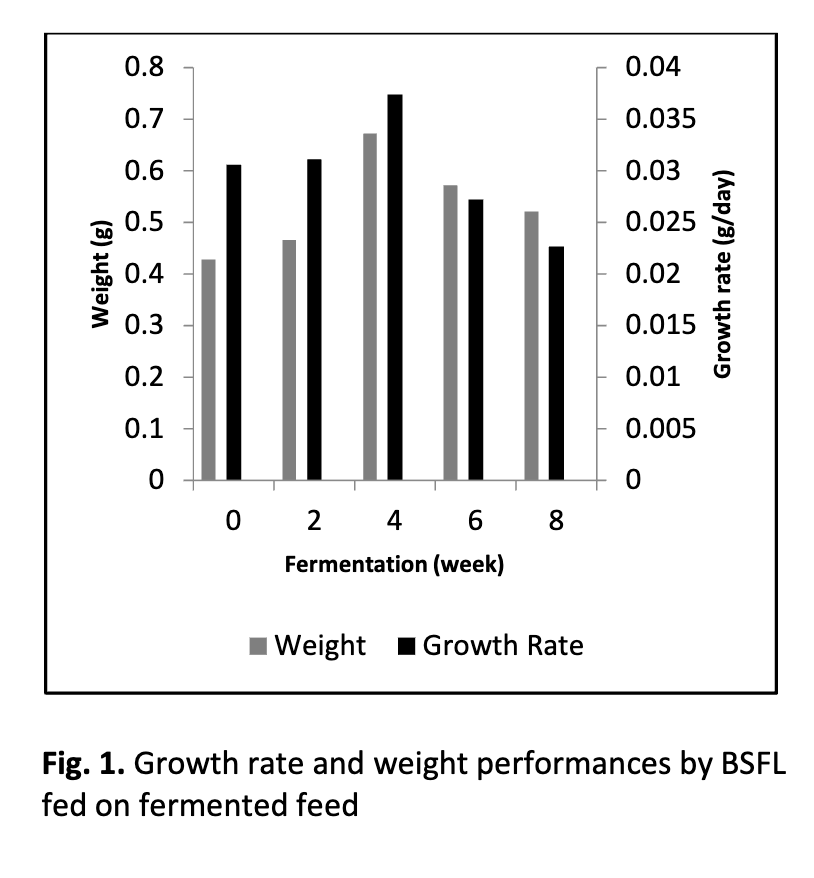Lipid and Protein from Black Soldier Fly Larvae Fed with Self-Fermented Coconut Waste Medium
Keywords:
Black soldier fly larvae, coconut waste, protein , lipidAbstract
This study explored the potential of black soldier fly larvae (BSFL) in producing lipid and protein as well as its ability to treat the organic waste by rearing at different fermentation periods of coconut waste medium (0, 2, 4, 6 and 8 weeks). Growth rate of larvae was determined by studying the changes in the larvae biomass weight per rearing duration. The BSFL fed with 4 weeks of feed showed the highest growth rate and weight followed by week 6 and week 8. Week 4 attained the highest value for lipid (42.74 ± 2.06)% and week without fermentation had the lowest value of lipid (32.96 ± 1.99)%. Protein content obtained from the BSFL was increasing with fermentation period. The highest protein content was larvae fed with 8 weeks fermentation (18.63 ± 0.18)%. The lowest protein content was also larvae fed with without fermentation medium (10.81 ± 0.11)%. Waste reduction rate (WRR) was the highest when the larvae were fed with medium without fermentation that was (0.024 ± 0.001) g/d. The lowest WRR was when the larvae were fed with 8 week fermentation medium (0.015 ± 0.001) g/d. The highest Efficiency of Converted of Digested Food (ECD) value was found in sample of 4 week fermentation medium (0.093 ± 0.003). The lowest ECD value was found in the sample without fermentation (0.063 ± 0.002).
Downloads




























